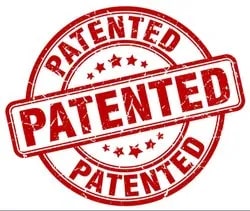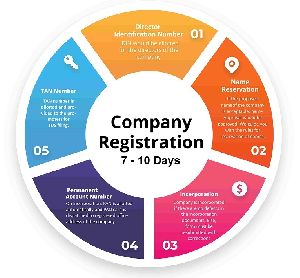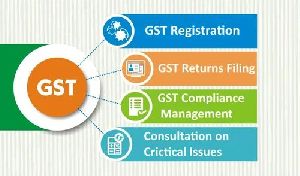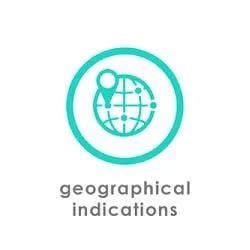Patent Services
About Patent Registration
Patents provide time-limited monopolies for the disclosure of inventions. These monopoly rights allow inventors or the businesses that own them to profit financially, providing an incentive for investing the time and money into research and development. A patent allows you to exclude competition for what is covered by the patent. This allows you to capture all of the sales for your new and innovative product or service. And without competition you can set your price higher and earn a higher profit margin. All other things equal, you will make more money with a patent than without.
Aside from market value and pricing power, patents can deter your competition from copying your product or service, or when they fail to respect your patent, entitle you to claim monetary damages for your lost profits from competitors who do. This provides a level of security that allows new companies to build their business without being quickly overcome by large competitors with more resources.
An enforceable Patent is the key to effective Commercialization/Out-Licensing of any technology. No matter how good a technology is, if the description of the technical subject matter is not enabling or fails to disclose all necessary embodiments, and in case the claims are narrowly drafted and do not gain support from the specification, the worth of the technology is insignificant.
Our firm’s greatest strength is in helping clients with patents. We are particularly experienced in helping companies achieve their patenting objectives in a way that allows them to budget their expenditures to scale with the growth of their business.
We provide comprehensive patent services in India. We also help clients obtain patents elsewhere around the world by acting as a liaison with patent agents in other jurisdictions.
An overview of the types of Patent Services that we provide is found below
- Patent Search/ Prior Art Search
- Invalidity Report on Patent
- Patent Filing of Provisional Application
- Patent filing Final Application
- PCT/International Patent Application
- Pre-grant Opposition of Patent
- Post Grant Opposition
- Cancellation of Patent
- Patent Litigation
- Legal Notice for Patent Infringement
- Patent Licensing and Transfer
Important Key Points/FAQs About Patent
What is a Patent?
Ans. A Patent is a statutory right for an invention granted for a limited period of time to the patentee by the Government, in exchange of full disclosure of his invention for excluding others, from making, using, selling, importing the patented product or process for producing that product for those purposes without his consent.
What is the term of a patent in the Indian system?
Ans. The term of every patent granted is 20 years from the date of filing of application. However, for application filed under national phase under Patent Cooperation Treaty (PCT), the term of patent will be 20 years from the international filing date accorded under PCT.
Which Act governs the patent system in India?
Ans. The patent system in India is governed by the Patents Act, 1970 (No.39 of 1970) as amended by the Patents (Amendment) Act, 2005 and the Patents Rules, 2003. The Patent Rules are regularly amended in consonance with the changing environment, most recent being in 2016.
Does Indian Patent give protection worldwide?
Ans. No, Patent protection is a territorial right and therefore it is effective only within the territory of India. There is no concept of global patent. However, filing an application in India enables the applicant to file a corresponding application for same invention in convention countries or under PCT, within or before expiry of twelve months from the filing date in India. Patents should be obtained in each country where the applicant requires protection of his invention.
What can be patented?
Ans. An invention relating either to a product or process that is new, involving inventive step and capable of industrial application can be patented. However, it must not fall into the categories of inventions that are non- patentable under sections 3 and 4 of the Act.
What are the criteria of patentability?
Ans. An invention is patentable subject matter if it meets the following criteria –
- It should be novel.
- It should have inventive step or it must be non-obvious
- It should be capable of Industrial application.
- It should not attract the provisions of section 3 and 4 of the Patents Act 1970.
What types of inventions are not patentable in India?
Ans. An invention may satisfy the condition of novelty, inventiveness and usefulness but it may not qualify for a patent under the following situations:
1) an invention which is frivolous or which claims anything obviously contrary to well established natural laws;
2) an invention the primary or intended use or commercial exploitation of which could be contrary to public order or morality or which causes serious prejudice to human , animal or plant life or health or to the environment;
3) the mere discovery of scientific principle or the formulation of an abstract theory or discovery of any living thing or non-living substance occurring in nature;
4) the mere discovery of a new form of a known substance which does not result in enhancement of the known efficacy of that substance or the mere discovery of any new property or new use for a known substance or of the mere use of a known process, machine or apparatus unless such known process results in a new product or employs at least one new reactant;
Explanation: For the purposes of this clause, salts, esters, ethers, polymorphs, metabolites, pure form, particle size, isomers, mixtures of isomers, complexes, combinations and other derivatives of known substance shall be considered to be the same substance, unless they differ significantly in properties with regards to efficacy;
5) a substance obtained by mere admixture resulting only in the aggregation of the properties of the components thereof or a process for producing such substance;
6) the mere arrangement or re-arrangement or duplication of known devices each functioning independently of one another in a known way;
7) a method of agriculture or horticulture;
8) any process for medicinal, surgical, curative, prophylactic (diagnostic, therapeutic) or other treatment of human beings or any process for a similar treatment of animals to render them free of disease or to increase their economic value or that of their products;
9) plants and animals in whole or any part thereof other than microorganisms but including seeds, varieties and species and essentially biological processes for production or propagation of plants and animals;
10) a mathematical or business method or a computer program per se or algorithms;
11) a literary, dramatic, musical or artistic work or any other aesthetic creation whatsoever including cinematographic works and television productions;
12) a mere scheme or rule or method of performing mental act or method of playing game;
13) a presentation of information;
14) topography of integrated circuits;
15) an invention which, in effect, is traditional knowledge or which is an aggregation or duplication of known properties of traditionally known component or components;
16) inventions relating to atomic energy;
Can any invention be patented after publication or display in the public exhibition?
Ans. Generally, an invention which has been either published or publicly displayed cannot be patented as such publication or public display leads to lack of novelty. However, under certain circumstances, the Patents Act provides a grace period of 12 months for filing of patent application from the date of its publication in a journal or its public display in an exhibition organized by the Government or disclosure before any learned society or published by applicant. The detailed conditions are provided under Chapter VI of the Act (Section 29-34).
Does the Patent Office keep information of the invention secret?
Ans. Yes. All the patent applications are kept secret upto 18 months from the date of filing or priority date whichever is earlier and thereafter they are published in the Official Journal of the Patent Office which is published every week and also available on the IPO website. After its publication, public can inspect the documents and also may take the photocopy thereof on payment of the fee as prescribed.
Who can apply for a patent?
Ans. A patent application can be filed either by true and first inventor or his assignee, either alone or jointly with any other person. However, legal representative of any deceased person can also make an application for patent.
How can I apply for a patent?
Ans. A patent application can be filed with Indian Patent Office either with provisional specification or with complete specification along with fee as prescribed in schedule I. In case the application is filed with provisional specification, then one has to file complete specification within 12 months from the date of filing of the provisional application. There is no further extension of time to file complete specification after expiry of said period.
What are the types of applications?
Ans. The types of applications that can be filed are:
A) PROVISIONAL APPLICATION :Indian Patent Law follows first to file system. A provisional application is an application which can be filed if the invention is still under experimentation stage. Filing a provisional specification provides the advantage to the inventor since it helps in establishing a ―priority date of the invention. Further, the inventor gets 12 months’ time to fully develop the invention and ascertain its market potential and to file the complete specification.
B) ORDINARY APPLICATION: An application for patent filed in the Patent Office without claiming any priority either in a convention country or without any reference to any other earlier application under process in the office. Such type of application is known an ordinary application.
C) CONVENTION APPLICATION: An application for patent filed in the Patent Office, claiming a priority date based on the same or substantially similar application filed in one or more of the convention countries is known as a convention application. In order to get convention status, an applicant should file the application in the Indian Patent Office within 12 months from the date of first filing of a similar application in the convention country.
D) PCT INTERNATIONAL APPLICATION: An Application filed in India as Receiving Office (RO) under Patent Cooperation Treaty is an international application which can be filed in more than 150 countries by a single application.
E) PCT NATIONAL PHASE APPLICATION: When an international application is made according to PCT designating India, an applicant can file the national phase application in India within 31 months from the international filing date or the priority date, whichever is earlier.
F) PATENT OF ADDITION : When an invention is a slight modification of the earlier invention for which he has already applied for or has obtained patent, the applicant can go for patent of addition if the modification in the invention is new. One of the benefits of filing patent of addition is that there no need to pay separate renewal fee for the patent of addition during the term of the main patent and it expires along with the main patent.
G) DIVISIONAL APPLICATION: When an application claims more than one invention, the applicant on his own or to meet the official objection on the ground of plurality or distinct invention may divide the application and file two or more applications, as the case may be for each of the inventions. This type of application, divided out of the parent one, is known a Divisional Application. The priority date for all the divisional applications will be same as that of the main (the Parent) Application (Ante-dating).
Is it necessary to file a provisional application?
Ans. Generally, when an invention is not complete an application can be filed with provisional specification which is known as provisional application. This is useful in establishing a priority date for your invention. Moreover, it also gives sufficient time to the applicant to assess and evaluate the market potential of his invention before filing complete specification. However, it is not necessary to file an application with provisional specification and one can file application directly with complete specification.
When is an application for patent published?
Ans. Every application for patent is published after expiry of 18 months from the date of its filing or priority date whichever is earlier. However, following applications are not published.
A) Application in which secrecy direction is imposed
B) Application which has been abandoned u/s 9(1) and i.e when a provisional application has been filed and the complete application has not been filed with 12 months from the filing of the provisional application
C) Application which has been withdrawn 3 months prior to 18 months 26.
Is there any provision in the Patents Act for early publication?
Ans. Yes, the applicant can make a request for early publication in Form 9 along with the prescribed fee. After receiving such request the Patent Office publishes such application within a period of one month provided the invention contained thereon does not relate to Atomic energy or Defense purpose
You could call us on 9654711011 OR on 0124-4075701 write to us or e-mail us on p4legalip@gmail.com for immediate needed assistance, steps, and legal advisory.
Prior to fixing up the meeting/ conference, you may call on 09654711011 or on 0124-4075701 or write to us on p4legalip@gmail.com for necessary fee structure and quote and/or to know about the consultation & professional charges for needed legal representations.













